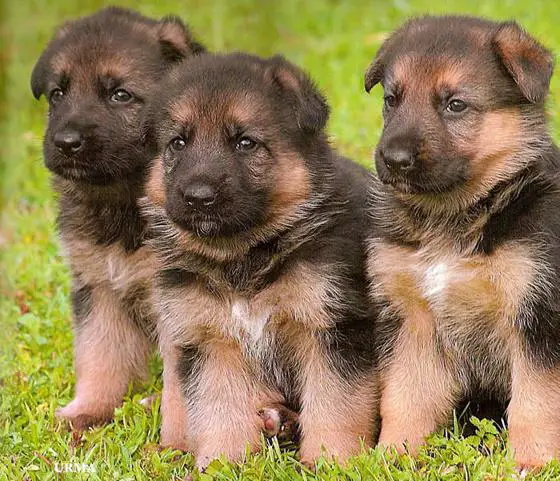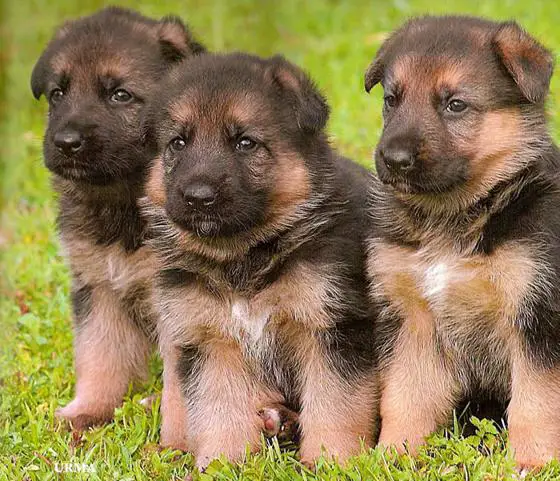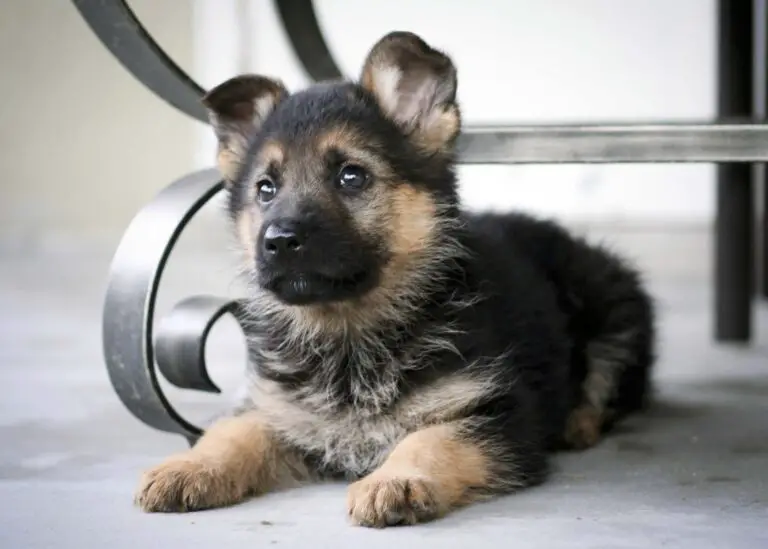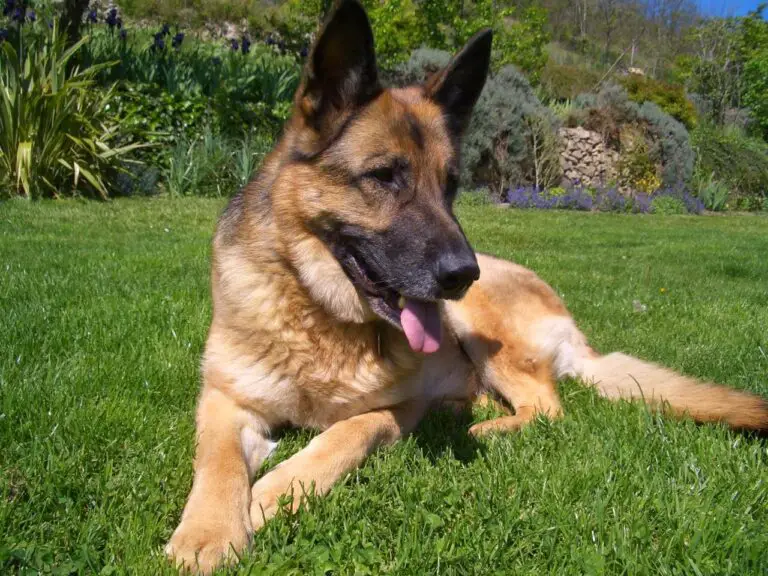Do German Shepherd Puppies Change Color?
Have you ever wondered why German Shepherd puppies look vastly different from their adult counterparts? One of the most intriguing things about German Shepherds is their coat color. German Shepherds come in an array of colors, ranging from black and tan, to sable and even all-white. But a common question among GSD enthusiasts is – do German Shepherd puppies change color? Well, the simple answer is yes, German Shepherd puppies can change color as they mature.
There are a multitude of factors that can influence the color of a German Shepherd’s coat. Some of these factors include genetics, age, and health. In this article, we will be taking a deep dive into the fascinating world of German Shepherd coat colors.
We’ll be covering the science behind why German Shepherds change color and the various factors that influence their coat color. We’ll also explore the most common coat color variations and tips on how to care for your furry friend’s coat. By the end of this article, you’ll be an expert in all things German Shepherd coat colors!
Understanding German Shepherd coat colors
German Shepherds have a striking coat that adds to their appeal. The breed comes in a range of beautiful colors, including black, red, sable, white, and blue. When it comes to understanding German Shepherd coat colors, it’s essential to note that there is no single “ideal” color. Each coat color has its charm and personality traits.
In terms of genetics, the color of a German Shepherd’s coat is inherited from its parents. It’s worth mentioning that two German Shepherds of different colors can produce puppies with various hues. Furthermore, a puppy’s coat color can appear different from its final adult coat color as puppies often lose their puppy coat as they mature.
Different shades of a German Shepherd’s coat also play a role in its personality traits. For example, white German Shepherds are often friendly and gentle, while black and tan ones are confident and obedient. It’s fascinating how much a dog’s coat color can indicate its temperament!
To sum it up, understanding German Shepherd coat colors is critical for any potential owner looking for a specific color or temperament. But keep in mind that the real treasure of a German Shepherd is its loyalty and intelligence, regardless of coat color!
Factors influencing color changes in German Shepherd puppies
German Shepherd puppy’s coat color can change significantly in the first few months of their lives. Different factors may influence the way their fur grows and changes. The primary factor contributing to the variations in color is genetic makeup, but other factors such as diet, environment, and temperature can also play a part.
Exposure to sunlight and UV rays can lighten a puppy’s coat, while colder temperatures can cause the fur to grow thicker and darker. Nutrition also plays a significant role in promoting vibrant and healthy coat colors. Consuming a balanced diet that’s rich in essential vitamins and minerals can help maintain your German Shepherd’s natural coat color.
Furthermore, the puppy’s age is another factor that influences the fur color changes. As a puppy grows up, their coat changes as well. The youthful melanin production process can cause changes in the pigment of the fur.
In summary, the German Shepherd puppies’ coat color can change due to genetic factors, environmental changes, nutrition, and age. Remember to provide your puppy with high-quality food, shelter, and exercise, and if you’re concerned about their coat color, always consult your vet.
The role of genetics in German Shepherd coat colors
The distinct coat colors of German Shepherds are determined by genetics. The genes from both parents dictate the color of their offspring’s coat, including its hue, pattern, and texture. German Shepherds carry two genes that affect their coat color, one from each parent. These genes interact in various ways, leading to some unique coat colors.
In essence, a German Shepherd’s coat color is determined by the combination of genes passed on by their parents. Thus, breeders carefully select which dogs they breed to produce puppies with specific coat colors. Moreover, genetics also influence the likelihood of puppies changing their coat colors during their puppyhood.
With a better understanding of the role genetics play in coat color, you’ll be able to appreciate the science behind your German Shepherd’s looks.
The color-changing process in German Shepherd puppies
German Shepherd puppies are born with a specific coat color and pattern that may change as they mature into adults. The process of color changing occurs due to their genes and is a natural phenomenon.
As they grow, German Shepherd puppies undergo a series of coat color changes that may occur in several ways, such as their fur getting darker or lighter, developing new color patches or losing existing ones.
The age at which the color change process begins varies from one puppy to another, but it typically starts around 2-4 weeks after birth. The process of color change continues for a few months before stabilizing into the adult coat color where they tend to keep the same color for the rest of their lives.
During this time, it’s common for German Shepherd puppies to have “puppy uglies.” This is when their fur is patchy and not uniform, but it always resolves itself eventually.
Overall, while it may be exciting to watch your German Shepherd puppy change colors, it’s important to remember that the color change process is a natural part of their growth and development. With proper care, you can ensure that they develop a beautiful adult coat that will last a lifetime.

Common German Shepherd coat color variations
German Shepherds come in various coat colors, ranging from black and tan to all-white. The most common coat color is a mix of black and tan, with the black color being dominant. Some German Shepherds also have a solid black coat, while others have a black saddle on their back with a tan or red coat on their legs, chest, and face.
Sable German Shepherds have a unique coat color that combines various shades of brown, black, and gray, creating a distinctive wolf-like appearance. White German Shepherds are also popular and have pure white fur with a black nose and dark eyes.
Liver German Shepherds, also known as Chocolate German Shepherds, have a brown coat with a liver-colored nose and dark eyes. Rare coat colors in German Shepherds include blue and silver, resulting from a recessive gene.
It’s worth noting that some German Shepherd coat colors may change over time, particularly during the puppy’s first year. Understanding the coat color variations is vital for GSD owners since it may help them to recognize their pup’s unique traits and care for their coat accordingly.
Caring for your German Shepherd’s coat and color
Taking care of your German Shepherd’s coat and color is important for their overall health and appearance. Regular grooming is key to maintain a healthy coat and ensure it stays in good condition. Brushing their fur on a daily basis helps to remove dead hair and prevent matting. You can also bathe them occasionally, but not too often as it may strip their coat of natural oils.
It is important to check your German Shepherd’s skin regularly for any signs of irritation, redness or bumps, as this could be an indication of skin allergies or parasites. If you notice any skin issues, take them to the vet for proper diagnosis and treatment.
Diet also plays a crucial role in maintaining the health of your German Shepherd’s coat and color. Make sure their diet is balanced and includes essential nutrients such as omega 3 fatty acids, protein, and vitamins.
Lastly, limit your German Shepherd’s exposure to intense sunlight or harsh chemicals, as it may cause damage to their coat and affect their natural color. Protect their coat from environmental elements and avoid using harsh chemicals on it. With proper care, your German Shepherd’s coat will remain healthy and shiny, showcasing their stunning coat color.
Conclusion
In conclusion, German Shepherd puppies do indeed change color as they age. This process is influenced by various factors including genetics, age, diet, and environment. While it may be hard to predict exactly what color your German Shepherd puppy will end up with as an adult, it is important to note that their coat color does not determine their health or temperament.
As a responsible owner, it is essential to provide proper care for your German Shepherd’s coat to ensure it remains healthy and vibrant. This includes proper grooming, a balanced diet, and regular exercise. It’s also important to remember that each German Shepherd is unique and special, regardless of their coat color.
Whether your German Shepherd ends up with a classic black and tan coat or a unique sable or white coat, they will undoubtedly continue to bring joy and love into your life. So embrace their changing colors and cherish your furry friend for the amazing companion they are.




